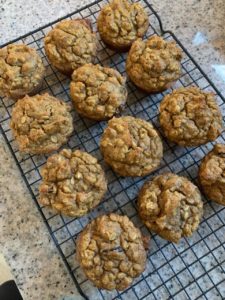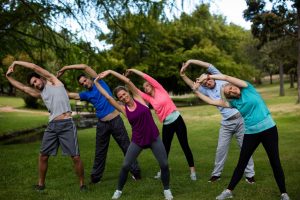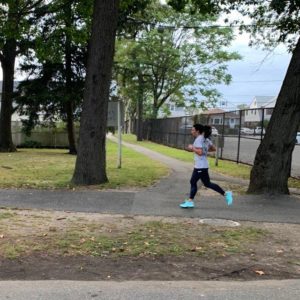“Superhero Muffins” are a staple from the cookbook Run Fast, Eat Slow written by elite runner, Shalane Flanagan, and chef & nutrition coach, Elyse Kopecky. This week, Shalane announced her retirement from professional running; so to celebrate her career, we are sharing this fall ready version of their famous muffins. (Learn more about Shalane here!)
Since it is Turkey Trot Training season here at Peak Performance, this week’s recipe is ready to fuel your body for a long training run on a Saturday morning (or Sunday if that’s your preference).
Makes 1 dozen
Ingredients:

- 2 cups almond meal
- 1 1/2 cups old-fashioned rolled oats
- 1 tablespoon pumpkin pie spice
- 1 teaspoon baking soda
- 1/2 teaspoon salt
- 3 eggs
- 1 1/2 cups pumpkin puree
- 6 tablespoons butter, melted
- 1/2 cup pure maple syrup
- 1 teaspoon vanilla extract
- 1/2 cup raisins, walnuts or chocolate chips (optional)
Directions:
- Preheat oven to 350 degrees. Line a 12-cup standard muffin tin with paper muffin cups.
- In a large mixing bowl, stir together the almond meal, oats, pumpkin pie spice, baking soda and salt.
- In a smaller bowl, whisk together the eggs, pumpkin puree, butter, maple syrup and vanilla.
- Add the wet ingredients to the dry ingredients and stir until completely combined. If using raisins or chocolate chips, fold them in.
- Scoop the batter evenly into the muffin cups, filling them to the top.
- Bake for 32-35 minutes, until cooked through in the center and browned on top.
Recipe adapted from “Run Fast. Cook Fast. Eat Slow.” by Shalane Flanagan and Elyse Kopecky.




